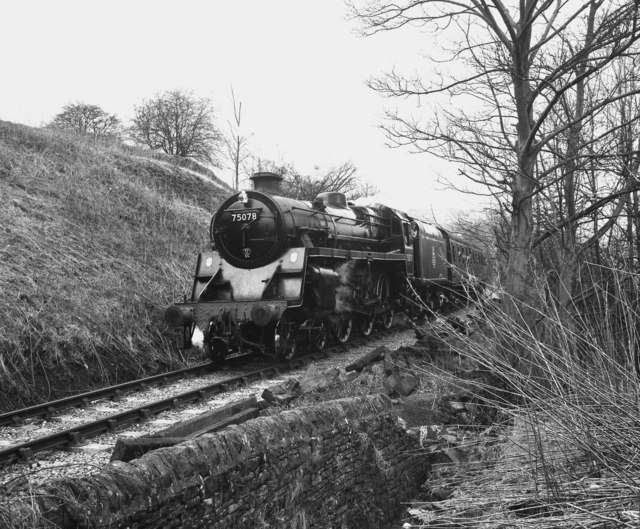
I recently took a long look at one my late Fathers books, and a railway book at that. This one was a particularly poignant read -- well, look (mostly pictures and facts, I suppose!) -- in these days of potential double-dip recession, creeping rise in unemployment and a practically manufacture-less Britain.
The book was a not-too-deep study of the British Rail Standard Class (steam) locomotives built between 1951 and 1960.
As Britain emerged from the dessimation of World War II, the governement nationalised, amongst other organisations, the railways of Britain. Up until that point four very seperate and competitve companies, based regionally throughout the country, had operated the trains, manned the stations and kept the nation moving. All had suffered during the war and seperately or together, as the brand new and sparking British railways, they would need new rolling stock and new motive power.
Even in these times it was felt that that motive power should be steam. The fuel for diesel engines was too expensive (and North Sea Oil was some years away from discovery). It would also be too expensive to electrify the entire system. Remember, Britain in these days was virtually bankrupt following a total war to fight Hitler.
So, steam engines it was. And why not? After all, each of the big four had their own factories and workshops for building them. Yes, boys and girls, once upon a time we used to actually make things in Great Britain. Indeed, products used to proudly bear the stamp 'Made in England'. Seems hard to believe now, I know, but it was once the case and not that long ago either, really.
Where would these locomotives be made? Building took place in all regions of BR: Doncaster, Darlington, Derby, Crewe, Horwich, Brighton and Swindon.
Almost beyond your wildest imaginings to think that great, big, powerful steam locomorives were built in Brighton and Darlington. But there was a time when in the South of England, trains were built at the Brighton works as well as Eastleigh and Ashford (Kent).
The Great Western, which became the Western region of British Railways, built their trains in Swindon. Brunel hired Daniel Gooch and he founded the works in this small Wiltshire market town in 1840. One hundred and twenty years later, the last mainline steam locomotive to be built for British Railways in Great Britain -- Evening Star -- left Swindon works.
.jpg) |
| Class 9F 92220 Evening Star at the National Railway Museum, York. |
And now?
Now, Britains railway operators -- for there isn't a British railways anymore -- order locomotives built in the USA or the Czech Republic! We've come a long way, in the wrong direction, in British locomotive design and manufacture in a very short space of time!
Listen to: Train Running Low on Soul Coal by XTC from the album Big Express.

No comments:
Post a Comment